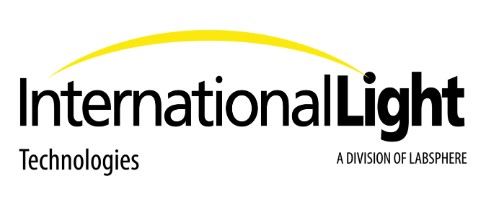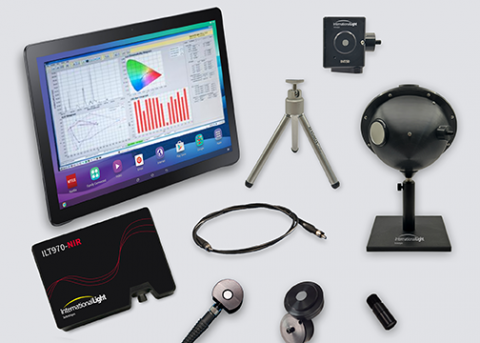ILT970-BB Broad Band Spectroradiometric Measurement Systems
The ILT970-BB Broad Band Spectroradiometric Measurement Systems by International Light Technologies set a benchmark in precision light measurement, engineered for demanding research and industrial environments. Designed to deliver accurate, repeatable data across the ultraviolet (UV), visible (VIS), and near-infrared (NIR) spectral regions, the ILT970-BB is a fully characterized and ISO 17025-certified solution for spectral irradiance and spectral flux measurements. Whether you're conducting product development, performance validation, or quality control, this system offers unmatched versatility and reliability.Each ILT970-BB system includes a spectrometer, optical fiber, measurement head, tripod stand, and the powerful SpectrILight III software suite. With calibration traceable to NIST standards and global recalibration centers in North America, Europe, and China, users can trust the integrity of their measurements over time. The system supports multiple input optics and calibration profiles, enabling users to measure irradiance (W/cm²), radiance (W/sr/cm²), luminance (cd/m²), illuminance (lux), and total flux (W, lm) with a single device.The following configurations are available: ILT970BB-RAA4 - Right angle adapter/diffuser head with 11 mm aperture and mini-integrating sphere for measuring spectral irradiance, total irradiance, and spectral characteristics of light sourcesILT970BB-W/A2 - Silica chip head with SMA adaptor for measuring spectral and total irradiance, illuminance, color parameters, and spectral characteristics of light sources.ILT970BB-W5E - Miniature cosine correcting diffuser with SMA905 fiber adaptor for measuring spectral and total irradiance, color parameters, and spectral characteristics of light sourcesILT970BB-INT50 - 5 cm (2”) integrating sphere for measuring forward and total spectral flux, power in watts, and spectral characteristics.ILT970BB-INT150 - 15 cm (6”) integrating sphere for measuring forward and total spectral flux, power in watts, and spectral characteristics.Key FeaturesBroad Spectral Range: Covers 200 nm to 1000 nm for irradiance/radiance and 300 nm to 1000 nm for spectral flux, ideal for UV-VIS-NIR applications.Modular Design: Choose from five preconfigured kits including integrating spheres, cosine diffusers, and silica chip heads for tailored measurement needs.ISO 17025-Certified Calibration: Ensures traceable, high-accuracy results across all measurement parameters.SpectrILight III Software: LabView™-based interface with real-time spectral and color analysis, metamerism calculations, and overlay comparison tools.Global Support: Recalibration centers in North America, Europe, and China provide ongoing service and compliance assurance.Flexible Optics Integration: Supports multiple input optics with unique calibrations, allowing diverse measurement capabilities from a single spectrometer.ApplicationsThe ILT970-BB is engineered for a wide range of scientific and industrial applications, including:Display Testing: Evaluate luminance, color uniformity, and spectral output of screens and monitors.Phototherapy Validation: Measure spectral irradiance and ensure compliance with therapeutic light source standards.Industrial Quality Control: Monitor lighting systems, LEDs, and other sources for consistency and performance.R&D and Product Development: Characterize new light-emitting technologies with precision and repeatability.Environmental and Agricultural Monitoring: Assess spectral composition for plant growth and cleanroom illumination.Automotive and Aerospace: Validate lighting systems for safety and regulatory compliance.What's Next?For researchers and engineers seeking a robust, calibrated, and user-friendly spectroradiometric solution, the ILT970-BB offers a comprehensive toolkit for light source characterization. Its modularity, precision, and software integration make it a standout choice for laboratories and production environments alike.Ready to elevate your light measurement capabilities? Explore the full range of ILT970-BB configurations and request a quote today.
Product number:
SW12025
Manufacturer:



